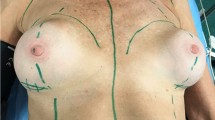Abstract
Urethral reconstruction following failed hypospadias repair or post-traumatic chronic stricture requires adequate amounts of tissue. Many surgical techniques utilizing different types of biological tissues have been attempted: (a) vascularized skin flaps from the prepuce, scrotum or penile shaft; (b) full-thickness free skin grafts; (c) vesical or buccal mucosa grafts; (d) ureter; artery; vein and appendix tissue. More recently, biodegradable polymers have also been used as delivery vehicles of urothelial cells in animals. It has been demonstrated that the implant of an acellular tissue matrix in the bladder can guide the regeneration of urothelium, blood vessels, smooth muscle and nerves. The aim of this study was to create an experimental model of urethral defect, and then repair it by implanting homologous acellular aortic grafts as urethral substitutes. An acellular matrix was obtained by detergent enzymatic treatment of rabbit thoracic aorta. The growth of urethral epithelium was verified in vitro, and homologous acellular vessels were then implanted in rabbits, bridging a previous surgical urethral defect. The outcome of reconstructive surgery was evaluated histologically at 10 days, 3 weeks, 3 and 12 months. As the time after surgery increased, the neourothelium became less thick, signs of inflammatory response disappeared, and the orientation of collagen fibrils and smooth muscle fascicles resembled that of a normal urethra. The implants displayed abundant vascularization, and the luminal surface started to become irregular. Acellular blood vessels may represent a promising approach to urethral defect therapy for different reasons: (a) unlimited availability, (b) readily obtainable in different lengths and gauges, (c) the potential for being organized as tissue bank, and (d) that just one simple surgical procedure is needed. Nevertheless, before this technique can be applied in humans, it must be tested in more species and animals.
Similar content being viewed by others
Author information
Authors and Affiliations
Additional information
Received: 25 March 1999 / Accepted: 25 June 1999
Rights and permissions
About this article
Cite this article
Parnigotto, P., Conconi, M., Gamba, P. et al. Experimental defect in rabbit urethra repaired with acellular aortic matrix. Urological Research 28, 46–51 (2000). https://doi.org/10.1007/s002400050009
Issue Date:
DOI: https://doi.org/10.1007/s002400050009




